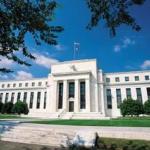 Sometime in the 1950s twentieth century economist Hyman Minsky developed his Financial Instability Hypothesis. At the cornerstone, is the notion that economic stability breeds instability. How’s that possible?
Sometime in the 1950s twentieth century economist Hyman Minsky developed his Financial Instability Hypothesis. At the cornerstone, is the notion that economic stability breeds instability. How’s that possible?
As Minsky observed, financial crisis follow periods of economic prosperity. These periods of prosperity encourage borrowers and lender to be progressively reckless. Increased credit and debt lead to inflated asset prices.
Eventually, excess optimism leads to instability…lending and debt move to unsustainable levels. Financial bubbles then burst. Asset prices crash and the mistakes of the preceding boom are corrected.
The housing boom and bust last decade followed Minsky’s script to the letter. A preponderance of cheap Fed credit was emanated into the financial system to soften the dot com crash. For whatever reason, the cheap credit made its way into the housing market.
Early speculators made big returns. Banks followed up the returns with riskier and riskier loans…because, if you recall, ‘house prices only go up.’ By the time it was over the whole economy had been distorted to a ridiculous farce. Naturally, it ended in tears.
All Calm, No Storms
Of course, the Fed’s medicine – an abundance of cheap credit – since the mortgage debt crisis has had the unnatural effect of a stock market with no apparent risks. Over the last five years, stocks have marched onward and upward with hardly a disruption. Once again, investors have been lulled to sleep at just the moment they should be the most awake.
Stock and bond market investors alike see a world of calm. It’s as if storms have been eliminated. The risk of losing capital seems to have disappeared.
“The volatility index (VIX), which tracks expected stock-market fluctuations based on options trading, has gone 74 straight weeks below its long-run average–a run of steadiness not seen since 2006 and 2007,” notes the Wall Street Journal.
“Moreover, the extra return that bond investors demand on investment-grade corporate debt over low-risk Treasury bonds, at one percentage point, hasn’t been this low since July 2007. The lower this “spread,” the less risk-averse are bond investors.”
If you recall, 2007 was the year the market cracked…triggering the financial crisis from hell. Should the present and ongoing run of market stability be a concern to investors? Here at the Economic Prism we think so…and others do too…
Monetary Activism
Oddly, the clever fellows at the Federal Reserve are voicing concern. Do they not realize that their zero interest rate and quantitative easing policies are the main culprit for the market’s long and stable run?
“This indicates a great deal of complacency,” remarked Richard Fisher, president of the Federal Reserve Bank of Dallas, earlier this week, in reference to last year’s record issuance of $366 billion in junk bonds, which is more than double the level reached leading up to the 2008 crisis. “When you get complacency you’re bound to be surprised at some point.”
Certainly Fisher knows what’s going on…and what the Federal Reserve’s part in it is. It’s no secret at all. It’s common knowledge.
Practically everyone knows it is impossible to set the federal funds rate at zero for six years straight, thus blowing a continuous stream of hot gas into asset prices, without encouraging excess risk taking. Yet that’s what the Fed has been doing.
The extreme and downright overbearing policies of monetary activism have achieved something spectacular. A market that appears to be overly stable where stock prices only go up. Obviously, this sort of rigged system rewards the most leveraged players…the biggest risk takers who borrow money on the cheap to place big bets on stocks.
The gamble works spectacularly well until just the moment it doesn’t. That’s when instability takes over and markets freefall. The looming crash will be bigger, faster, and more destructive than the last one. After that, the government buttinskies will scheme any savings you have left for your own good.
Sincerely,
MN Gordon
for Economic Prism




